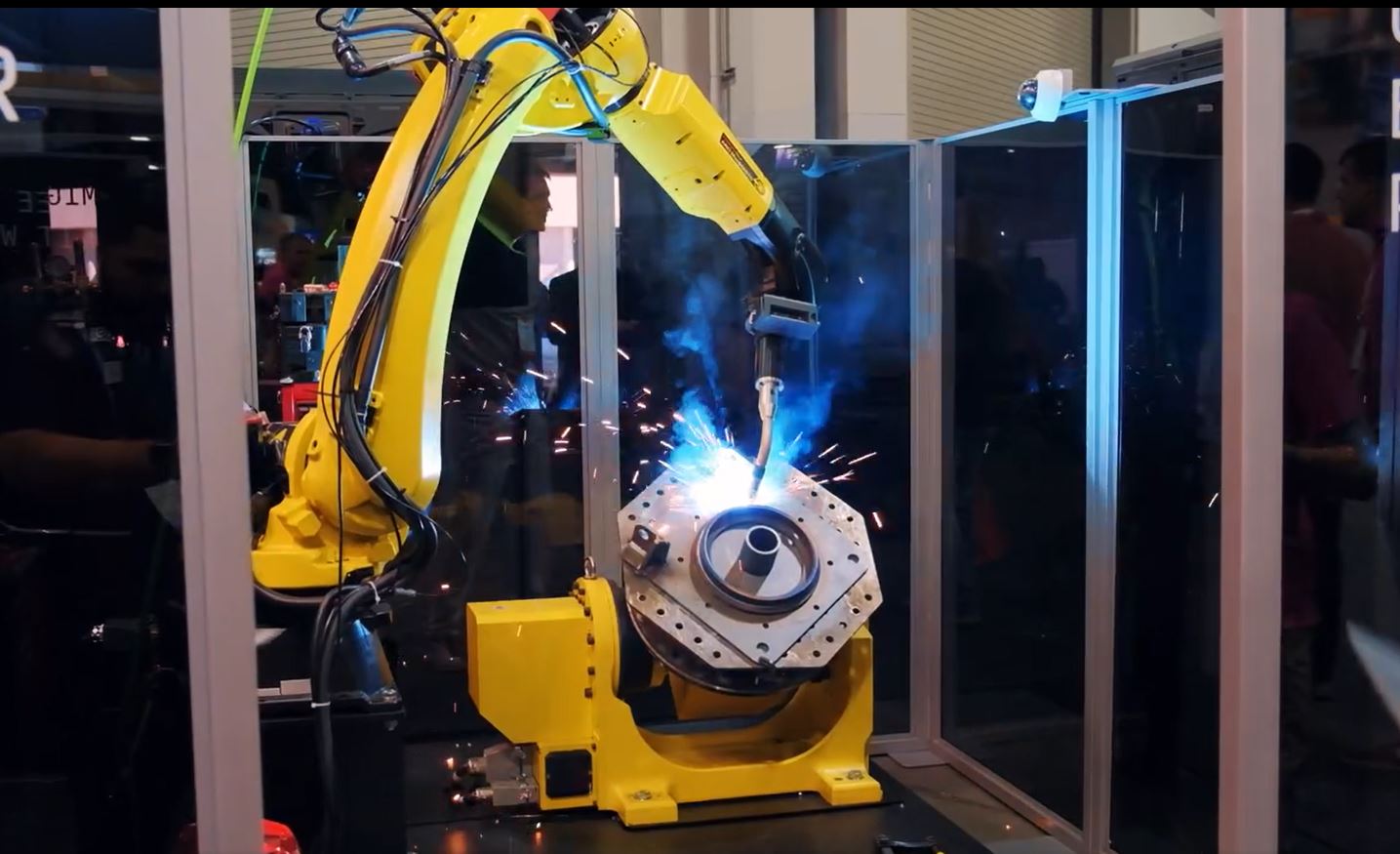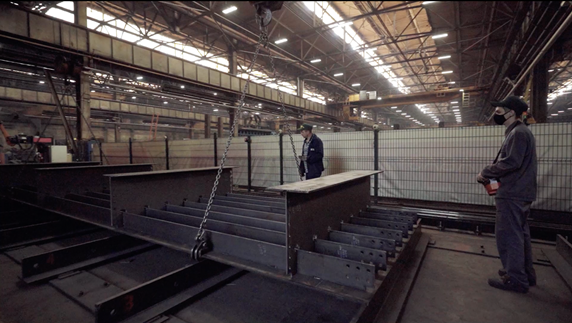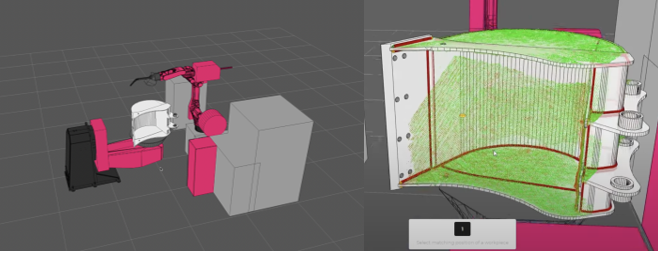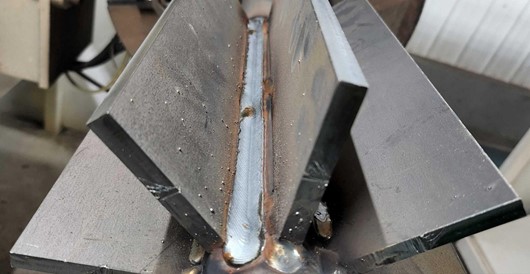Autonomous Robotic Welding

What is breakthrough technology really capable of?
You often hear about self-driving cars and their levels of autonomy. When can a driver completely remove their hands from the steering wheel? This also applies to robots. How can robots become fully autonomous?
What are Autonomous Robots?
Let’s look at the levels of freedom for self-driving cars and draw parallels with the levels of automation in robotic welding.

Level 0. No Automation.
Just like with self-driving cars at Level 0, everything needs to be done manually. You have a part that must be perfectly pre-assembled, without any deviations, otherwise robots won’t be able to complete the task. You need to place this part in a precisely defined position, and deviations are also unacceptable. A highly skilled programmer uses a teach pendant to program every trajectory of the robot’s path.
Level 1. Assistance.
At Level 1 of self-driving cars, features like cruise control emerge. Similarly, for robots, individual functions also arise that enable them to adapt to changes in the physical world; for instance, there’s Arc Sense.
Level 2. Partial Automation.
At Level 2, a human can take their hands off the steering wheel, but they need to monitor the road. In the case of robots, offline programming comes into play. Primarily, it allowed programming to occur not beside the robot, but within a virtual environment, reducing robot downtime. It also became more convenient for the programmer. However, you still require a highly skilled programmer who will program each trajectory of the robot’s path. Additionally, any change – whether in pre-assembling a part or its placement in the robotic cell – demands programming.
Level 3. Conditional Automation.
Level 3 represents a significant leap forward. Self-driving cars are already capable of performing most driving tasks, yet a human presence remains necessary for control.
This newfound freedom has been brought to the realm of robotics by ABAGY. The system now completely automates the robot’s path generation; no programming is required at all. Furthermore, ABAGY bring adaptability: a part can already have deviations, and it can be placed freely within the workspace. The company employs machine vision to enable robots to see, alongside mathematical algorithms that calculate everything automatically.
Level 4. High Automation.
Self-driving cars are currently at Level 4. Their level of freedom has already reached 99%. When it comes to autonomous robots, work with them becomes incredibly straightforward. Metaphorically speaking, it’s like speaking in the welding language. You don’t need to be a robotics expert or a programmer; having welding expertise is sufficient. All you need to do is define the welding parameters you require.
Level 5. Full Automation.
In the case of self-driving cars, reaching the level where one can confidently say “Zero human attention or interaction” has proven to be challenging. When it comes to robots, there’s no certainty that manufacturing will become 100% human-free. Frankly, it’s still an open question that makes sense to discuss later, after passing Level 4.
What is breakthrough technology really capable of?
Let’s explore specific examples from real production sites. This approach will provide the best insight into how breakthrough technologies can truly impact us right now.
Ease of Switching from One Product to Another

The main advantage provided by adaptive and autonomous robots is the seamless transition from one product to another. This capability allows for the utilization of robots in high-mix production environments. Here’s the first example.
Conventionally, most bridge structures worldwide are welded manually. Implementing robots in this process presents a significant challenge because each bridge part appears custom from a robot’s perspective. However, with ABAGY this one cell can weld approximately 50 different product each month. The company can switch from one product to another easily. No programming.
No “Zero Points”

Here, a part is loaded into the working area using a crane. With the traditional approach, you would have to place the part very accurately. And when it is such a heavy beam, it is extremely difficult to do this. In the case of Autonomous robots, the part is placed freely, without any zero points. Whatever way it’s convenient to position. After all, the robots will be able to “see” thank to machine vision where exactly it is.
Deformations During Welding

Bridge structures are usually huge and can get deformed during welding. This is a telling photo. See how curved the bridge beam is, about 4 inches off. But this is not a problem for ABAGY.
Simple Fixtures

Typically, this type of welding is done by hand due to the difficulty of fixing this product in the working area. Since the chain consists of many links. In this case, the chain is freely placed on the welding table. However, with the help of machine vision and mathematical algorithms, the robot completes this task with ease.
Another example is the excavator bucket. There are numerous variations of these buckets, often customized to specific orders.
Deviations due to Metal Bending
Even when dealing with a typical digging bucket, every individual bucket essentially takes on a unique identity from the perspective of robots. This is primarily due to deviations caused by the process of metal bending during the pre-assembling.

Part Rotation

Additionally, due to its complex shape, the bucket needs to be continuously rotated. This is a requirement for both a human welder and a robot. In the case of ABAGY, the synchronization of the robot’s movements and the positioner also occurs automatically.
And here’s the rotor. Here again, we’re addressing high-mix production. The same complexity applies to rotors – rotor blades might have slight deviations from the perfectly aligned position during assembly, and the robot needs to be capable of adapting to these changes. Autonomous robots excel at handling these variations, which is crucial in our case.

There will be even more examples and information about new advanced technologies during the session. Additionally, we’ll delve into Considering an Investment in Robotic Welding.
Attend our session F126.
Date: September 12, 2023, Time: 12:00 pm – 1:30 pm
About the Author:
David Suttle, Chief Revenue Officer at ABAGY
- 30+ Years of Expereience in Manufacturing Tech
- Leadership Positions Across a Variety of Industries and Corporations: Norfolk Naval Shipyard, Reliance Electric, CompuServe Networks, EWI – Edison Welding Institute, Path Robotics, and ABAGY.
ABAGY is an AI & Machine Vision based software for industrial robots.















